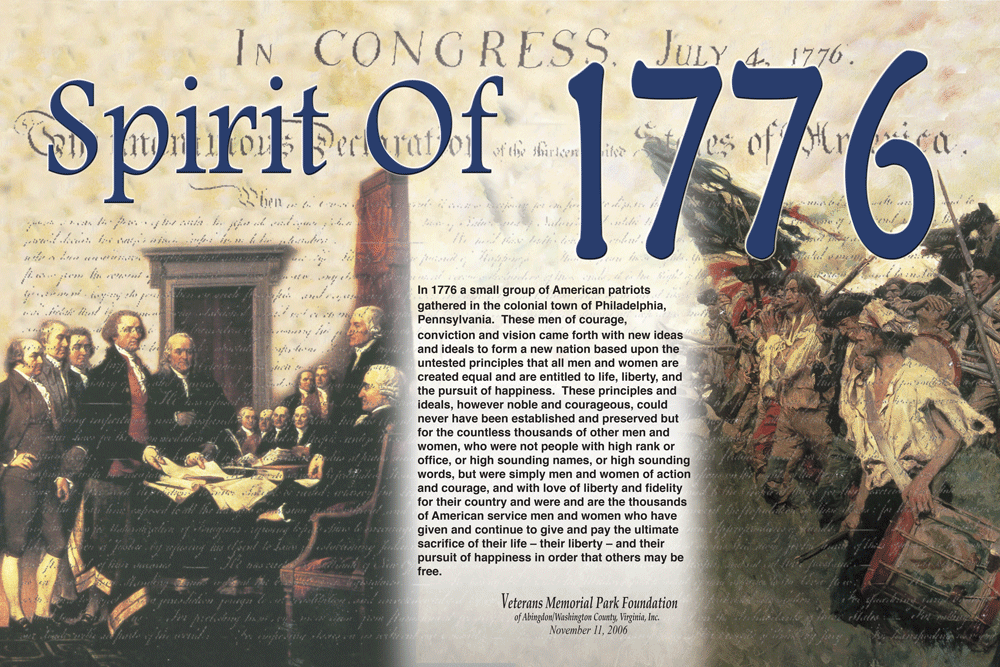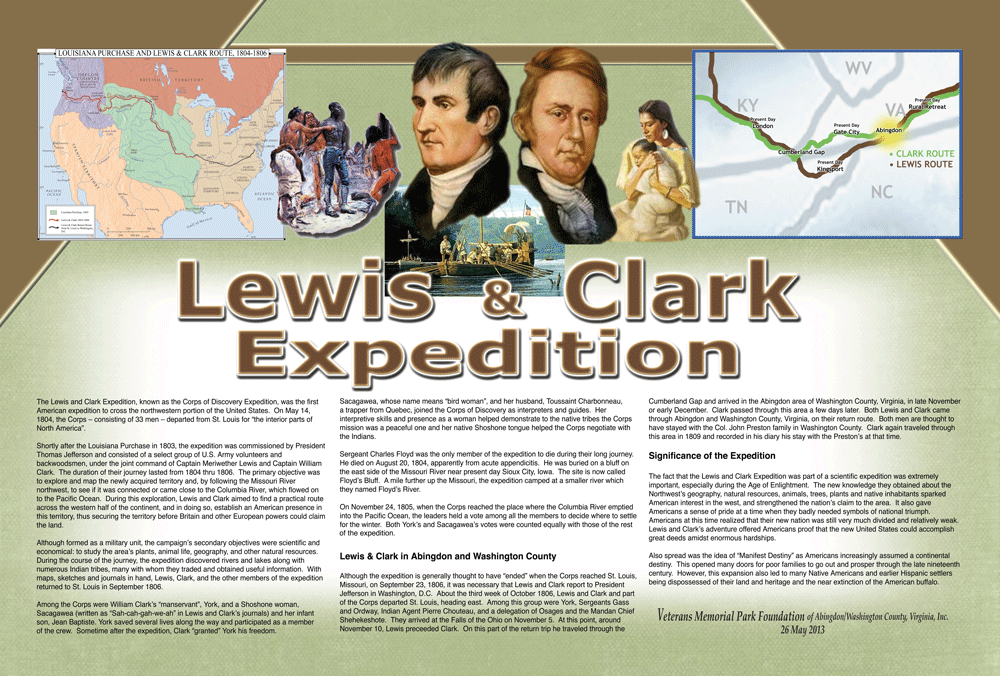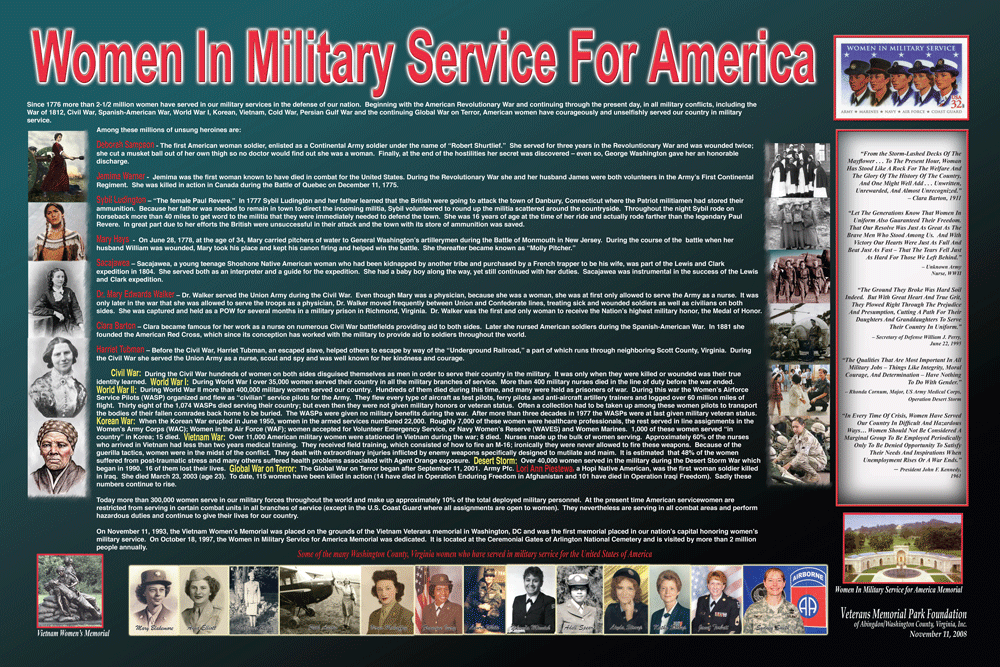PARK DEDICATION
November 11, 2003, Veterans Memorial Park was officially dedicated and Lt. Billy Webb Avenue was proclaimed as the street name to the entrance of the park.
William “Billy” Webb was born and raised in Abingdon, one of two children and the only son of Grant and Mary Gray Webb. He was in the the first graduating class of the then new Abingdon High School. As a teenager, Billy was a newspaper boy and could be seen every morning before school riding his bicycle on the streets of Abingdon, delivery the Bristol Herald Courier, rain or shine. He graduated from VPI and was commissions a Second Lieutenant in the United States Army. Soon thereafter, at the age of 24, he was ordered to Vietnam. In early June 1966, after being in Vietnam for only about 3 weeks, Billy and a young Sergeant we scouting an area to establish a base camp about 20 miles north of Saigon. Upon reaching the top of a small hill, then known as Hill 23, he and the Sergeant were ambushed and killed by the Viet Cong.
Later Billy’s company established headquarters at the foot of the small hill where Billy had died. In front of the company headquarters hut was a little dusty dirt road. Billy’s comrades, who did not want him to ever be forgotten, proudly erected a simple “street sign” naming the little dirt road “Webb Avenue” in Billy’s honor. On another nearly road they placed another sign honoring the young Sergeant.
The North Vietnamese and Viet Cong swept through the base, after our troops had been withdrawn, and desecrated the signs and destroyed and any recognition that Billy and the Sergeant were ever there, or had ever lived or died.
Billy Webb was the only soldier from our area of whom we are aware who ever had a memorial erected in his honor on foreign soil, only to be later destroyed by the enemy. Thirty seven years later, here in Abingdon, Virginia, Billy’s hometown, we rectify that desecration, not only in honor of Billy, but all our fallen American heroes.
June 5, 1966, was to be a happy for the Webb family. It was Mrs. Webb’s birthday. It was to have been a day of celebration; instead it became a day of grief and a day of perpetual mourning for this family. It was on this day that our beloved Johnny Wood of Channel 5 brought the news to Mrs. Webb that his cousin, Billy, had been killed a few hours earlier, thousands of miles from his home. Johnny’s father, Mrs. Webb’s brother, had also served our Country was one of America’s first Army aviators in World War I. Billy left surviving his father, Grant Webb, who was a soldier in World War II, his mother, Mary Gray Webb, his 16 year old sister, Sandra, his young bride, Rebecca and their Siamese cat, Sydney, and many cousins. Rebecca was from the friendly pleasant village of Newsoms, Virginia, which is hundreds of miles from Abingdon in Eastern Virginia, not far from the Atlantic Ocean. Because she wished to be close to Billy, Rebecca asked that he be buried in Newsoms. There is where he lies today beneath a gravestone with a simple but profound epitaph: “Gave his life for his country in Vietnam.”
Rebecca tried to go on with her life and later remarried, but always carried Billy deep within in heart. On September 22, 2001, Rebecca passed away and in her dying wishes, requested that she be buried alongside her young warrior, Billy. Today Billy and Rebecca now lie side by side and I believe Billy’s soul is not at peace, at long last.
Nearly four decades after Billy Webb’s death, his spirit lives on and his story provided inspiration for this Park. When Mrs. Webb, now a widow, approaching her 91st birthday, learned from her daughter, Sandra, that the Town of Abingdon had named a street after Billy, she bravely and compassionately said what well could be the words of thousands of other brave, unselfish and giving American mothers about their lost sons and daughters: “But he’s not the only one.” Sandra, who had captured the significance, symbolism and spirit of the Town’s action, gave her heartfelt reply to her mother: “Momma, he represents them all – Momma, he represents them all.”
Taken from speech given by Emmitt Yeary
Liberty-Peace Tree Monument
November 11, 2010, we unveiled our second unique sculpture by artist David Spence, The Liberty-Peace Tree Monument, along with two signs, one describing the significance of the monument and the second showing which leaf represents which national language.
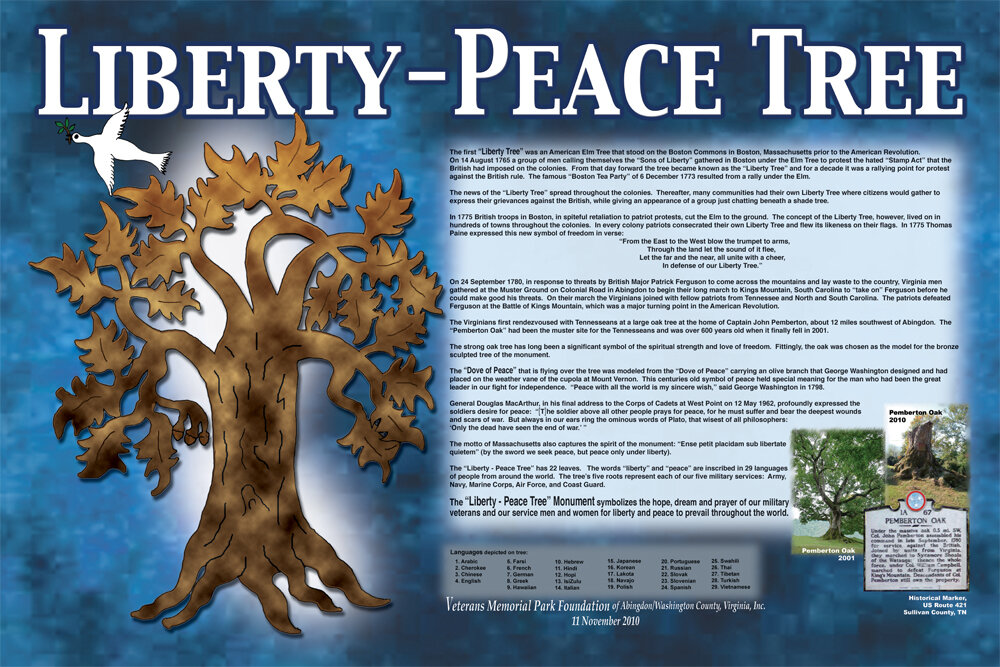
Liberty-Peace Tree Sign
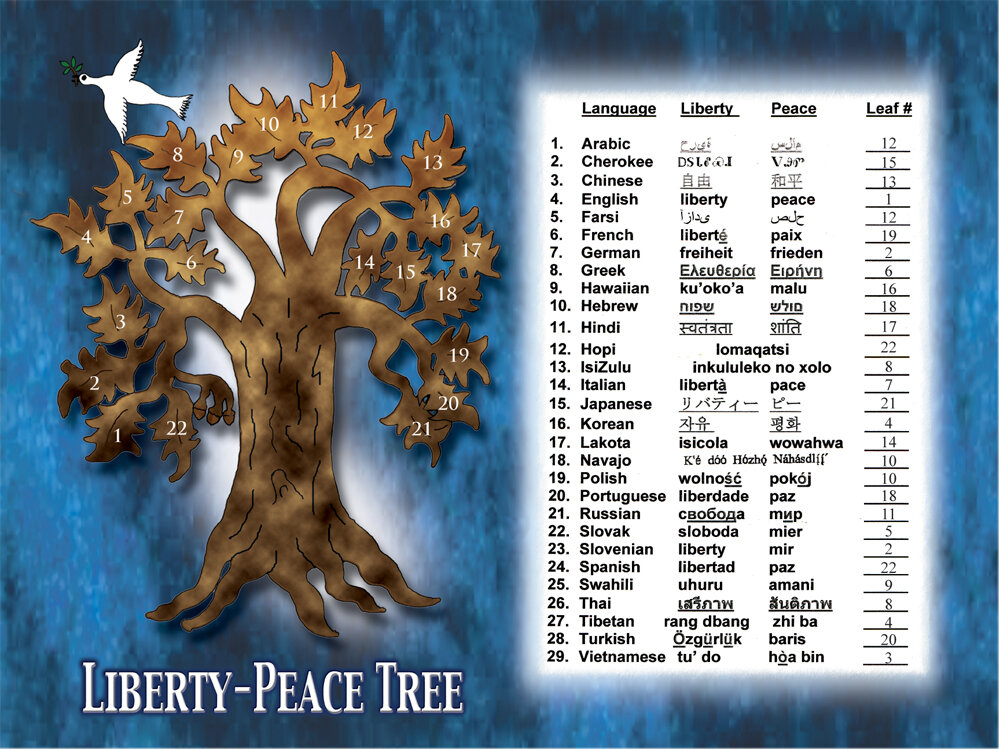
Languages on the Liberty Peace Tree Monument
Liberty - Peace Tree Sign
The first “Liberty Tree” was an American Elm Tree that stood on the Boston Commons in Boston, Massachusetts prior to the American Revolution.
On 14 August 1765 a group of men calling themselves the “Sons of Liberty” gathered in Boston under the Elm Tree to protest the hated “Stamp Act” that the
British had imposed on the colonies. From that day forward the tree became known as the “Liberty Tree” and for a decade it was a rallying point for protest against the British rule. The famous “Boston Tea Party” of 6 December 1773 resulted from a rally under the Elm.
The news of the “Liberty Tree” spread throughout the colonies. Thereafter, many communities had their own Liberty Tree where citizens would gather to express their grievances against the British, while giving an appearance of a group just chatting beneath a shade tree.
In 1775 British troops in Boston, in spiteful retaliation to patriot protests, cut the Elm to the ground. The concept of the Liberty Tree, however, lived on in hundreds of towns throughout the colonies. In every colony patriots consecrated their own Liberty Tree and flew its likeness on their flags. In 1775 Thomas Paine expressed this new symbol of freedom in verse:
“From the East to the West blow the trumpet to arms,
Through the land let the sound of it flee,
Let the far and the near, all unite with a cheer,
In defense of our Liberty Tree.”
On 24 September 1780, in response to threats by British Major Patrick Ferguson to come across the mountains and lay waste to the country, Virginia men gathered at the Muster Ground on Colonial Road in Abingdon to begin their long march to Kings Mountain, South Carolina to “take on” Ferguson before he could make good his threats. On their march the Virginians joined with fellow patriots from Tennessee and North and South Carolina. The patriots defeated Ferguson at the Battle of Kings Mountain, which was a major turning point in the American Revolution.
The Virginians first rendezvoused with Tennesseans at a large oak tree at the home of Captain John Pemberton, about 12 miles southwest of Abingdon. The “Pemberton Oak” had been the muster site for the Tennesseans and was over 600 years old when it finally fell in 2001.
The strong oak tree has long been a significant symbol of the spiritual strength and love of freedom. Fittingly, the oak was chosen as the model for the bronze sculpted tree of the monument.
The “Dove of Peace” that is flying over the tree was modeled from the “Dove of Peace” carrying an olive branch that George Washington designed and had placed on the weather vane of the cupola at Mount Vernon. This centuries old symbol of peace held special meaning for the man who had been the great leader in our fight for independence. “Peace with all the world is my sincere wish,” said George Washington in 1798.
General Douglas MacArthur, in his final address to the Corps of Cadets at West Point on 12 May 1962, profoundly expressed the soldiers desire for peace: “The soldier above all other people prays for peace, for he must suffer and bear the deepest wounds and scars of war. But always in our ears ring the ominous words of Plato, that wisest of all philosophers: ‘Only the dead have seen the end of war.’ ”
The motto of Massachusetts also captures the spirit of the monument: “Ense petit placidam sub libertate quietem” (by the sword we seek peace, but peace only under liberty).
The “Liberty - Peace Tree” has 22 leaves. The words “liberty” and “peace” are inscribed in 29 languages of people from around the world. The tree’s five roots represent each of our five military services: Army, Navy, Marine Corps, Air Force, and Coast Guard.
The “Liberty - Peace Tree” Monument symbolizes the hope, dream and prayer of our military veterans and our service men and women for liberty and peace to prevail throughout the world.
GRATITUDE
Gratitude for those that bore the battle.
They who with raised hand said "I'll go" and never returned, yet dreamt of a day in a place like this; where children ran and parents laughed and lovers walked hand-in-hand in the grass, among the trees and stones and the silent statues.
Gratitude for those who did return, partaking one again of the grace of these dreamt of simple pleasures - whole, broken, with joy and with sorrow.
Gratitude for those, restless in the dark hours, that prayed, worried, wept, mourned; who too, served and sacrificed.
Gratitude for those that supported, honored, celebrated; that heartened another with aid and comfort or welcomed them on any return ; whole, broken, no more.
Gratitude for the designers, the suppliers, the gatherers, the makers, the shippers, the deliverers, the providers of the book; basic essential kit; common to all who ever word our country's uniform. Mere article in ease, well-worn friend in training, protector in strife. Seeming simple, yet not at all so.
Like it's owner, the book was not alone. yet resting without company, who can tell if a companion is near, far or no more.
Gratitude thus, for all. All that sacrificed throughout the agens, in memory and in deep time, for freedom, for each of us, for humanity, to have joy, to bring joy to our Creator, here an dout among the stars.
Like each of us, this boot is never alone.
-written by John J. Dreyzehner, US Air Force, Veteran
-photo by Wendy Dwyer
November 11, 2022, we unveiled the unique sculpture, The Bronze Combat Boot.





